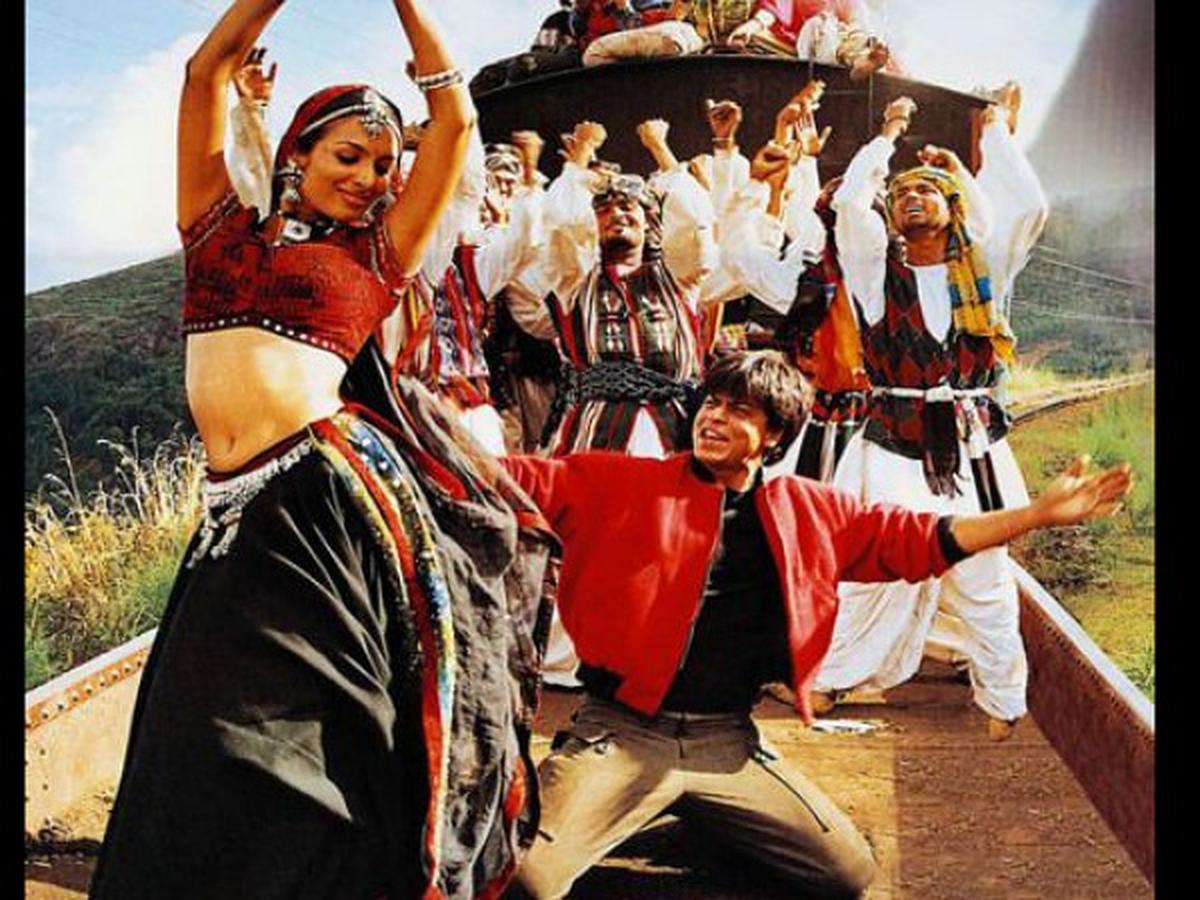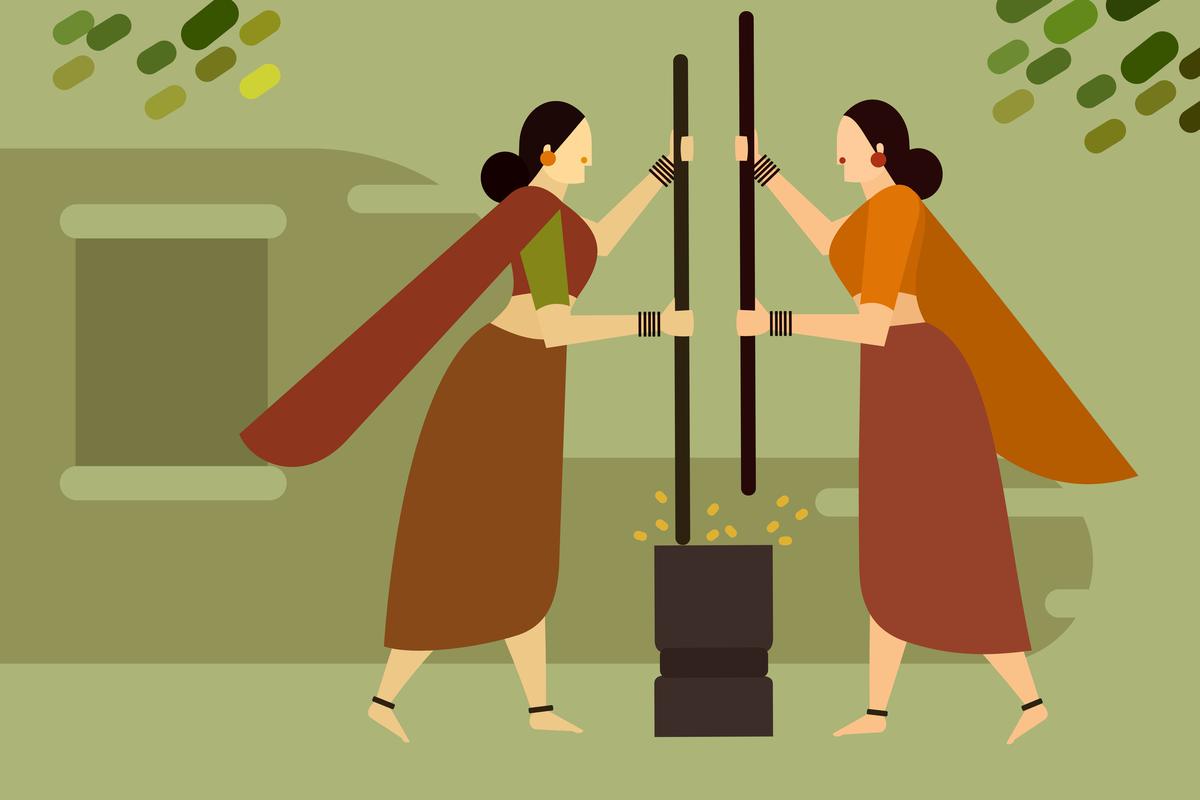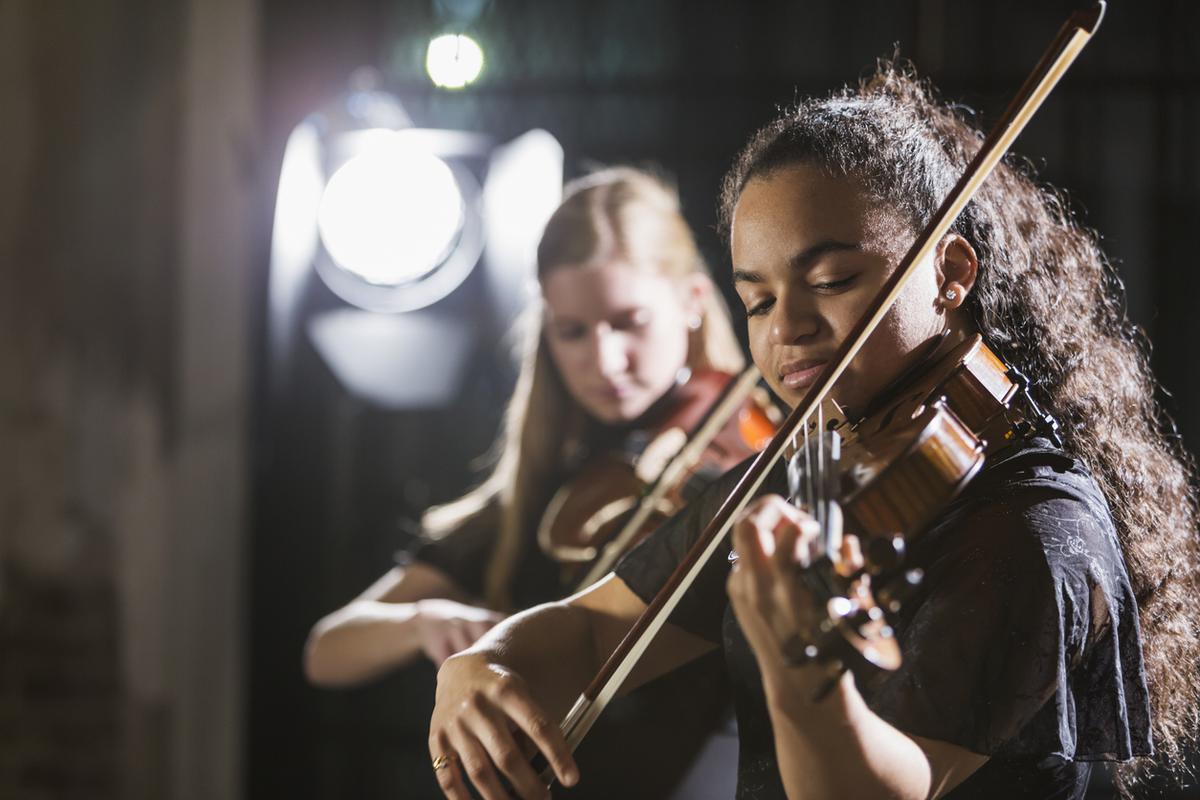It was a child’s birthday celebration. I’d accompanied my young daughters to the party and was looking forward to catching up with my friends. The birthday boy’s mom put on a DVD to keep the little ones occupied and allow the grown-ups to catch up with one another.

A snapshot from the song ‘Chaiyya Chaiyya’ in the movie ‘Dil Se’ (1998).
The plan worked till the sound of Shah Rukh Khan serenading Malaika Arora with the song Chaiyya Chaiyya cut through the adults’ hubbub. The moms, most of whom spoke no Hindi, morphed into teen girls screaming and dancing on the family room carpet.
What is it about a song, even when we don’t understand the words, that gets all, young and old, into such a state of euphoria? It is the rhythm — in this instance, the incessant, repetitive and simple beat of Chaiyya Chaiyya.
The word rhythm comes from the Greek word rhythmos, which means a regular recurring motion. Every day, possibly every hour of our lives, is filled with rhythm, beginning with our heartbeat. From the early morning jog all the way to clapping our hands at an evening concert, rhythm is ever present. Rhythm is more than a musical concept. It is an intrinsic part of human life — whether we are engaged in a solitary activity or some group task.
“Let’s find a thaalam as a nation together,” says composer A.R. Rahman in the film Thaalam — Rhythm of the Nation. The documentary features men from different backgrounds who come together as a team to participate in the Chundan Vallam (beaked boat) races of Kerala. We see how rhythm works as a unifying force while the rowers move in sync and the stunning visuals of god’s own country accentuate the message. Similar to clapping in a qawwali or a bhajan concert, rhyming syllables and lines help rowers to maintain time.
Songs of the earth
Travelling across India, we see villagers pounding grain with songs that have a sense of rhythm. It enables group activity and plays a critical role in helping people function as one. Dhobis washing clothes, women pounding rice, fishermen setting out to sail, all use rhythm to maintain coordination whether it’s just two people or 20. The next time you travel, notice how workers pump water in the salt belt of the Kutch region of Gujarat, or how the Jhumur dancers of Assam move to the beat of the dhol.

Rhythm spans not just our days but our lives as seen in the traditions that mark milestones, both personal and public. Whether the birth of a child, a wedding, winter harvest and summer solstice, or a funeral, every major event has its unique celebrations. Rhythm underpins all of these. From the vibrant Bhangra beats of Punjab, the graceful Ghoomar of Rajasthan, through the dynamic Kolyacha of the Konkan coast, to the simple Kummi of Tami Nadu, all the way to the quick-footed Cheraw of Mizoram, rhythm moves feet and bodies in India.
And this does not stop at our boundaries. All Asian cultures with enduring agricultural traditions have strong rhythmic music tied to them. Ma Tumbuk refers to the polyrhythmic music associated with rice pounding in the fields of Indonesia. The Japanese mark the new year with Mochitsuki, a traditional event which involves making rice cakes. Festive Balinese gatherings feature the Gamelan Jegog, a rhythm-filled production with many bamboo musical instruments.

When West African tribes were forced to live in captivity, the bata drums of the Yoruba were used to convey messages to one another.
| Photo Credit:
Wiki Commons
And beyond celebrations and festivities, it’s a vital means to preserve cultures that would have otherwise been lost. When West African tribes were forced to live in captivity, the bata drums of the Yoruba were used to convey messages to one another. Their interlocking rhythms were a polyrhythmic call and response akin to a conversation. Such drums are reminiscent of the nagada (kettle drums) used in India to make announcements and which are part of the traditional naubat or nine-instrument ensemble used during festivities.
A reason to stay fit
“The beat in ‘Ziddi Dil’ gives me the momentum to continue when I feel the first signs of fatigue,” says a friend who runs every morning listening to the song from the movie Mary Kom. Strong beats don’t just inspire people to move, they also create an urge to stay fit.

In synchronised swimming, rhythm not only serves as a timekeeper but embellishes the athletes’ movements.
| Photo Credit:
Getty Images/ iStock
Whether it’s training for a marathon, working out at the gym, or participating in a zumba class, the beat gives us a rush of adrenaline. According to an article in the Scientific American, people who exercise believe “music is not superfluous — it is essential to peak performance and a satisfying workout”. It’s not hard to understand why we like to hear Beyoncé or Daler Mehndi while we exercise. Synchronised swimming and gymnastics are the other end of this spectrum, where the rhythm not only serves as a timekeeper but embellishes the athletes’ movements.
Rhythm in Indian classical music is referred to as taal or tala. A simple beat such as the 4/4, referred to as the common time signature, can be followed intuitively. However, recognising more complex beats needs deliberate listening. In the Hindi movie Aashirwad, “ Rail gaadi rail gaadi chuk chuk chuk chuk, beech wale station bolein ruk ruk ruk ruk,” sings actor Ashok Kumar to children in a park. And somewhere in the midst of all the rhymes and riddles, these little ones discover the joy of rhythm.

For classically trained musicians, recognising rhythm becomes instinctive.
| Photo Credit:
Getty Images
All of us have our own favourite songs that we’ve heard from family and friends while growing up. What makes many of these songs special is the ease by which we can clap either individually or in a group while singing. Rhythm seeps into our subconscious from a very young age.
For classical musicians who’ve trained for years, recognising rhythm becomes instinctive when they hear a song. How about for those who’re not formally trained in music?
One of the best ways to recognise rhythm is by listening to the sounds around us. “The tapping of a chowkidhar’s stick as he makes his nightly rounds, the swishing sound of car wipers on a rainy day, and water dripping from a leaky tap,” are some examples that my students cite of rhythm in our daily lives.
Thus, it is rhythm that makes the tolling of temple bells or the chorus of crickets at night or the sound of waves crashing on a beach such an enchanting experience.
The writer is a Carnatic vocalist and adjunct professor of music at Ahmedabad University.
Stay connected with us on social media platform for instant update click here to join our Twitter, & Facebook
We are now on Telegram. Click here to join our channel (@TechiUpdate) and stay updated with the latest Technology headlines.
For all the latest Entertainment News Click Here
For the latest news and updates, follow us on Google News.
